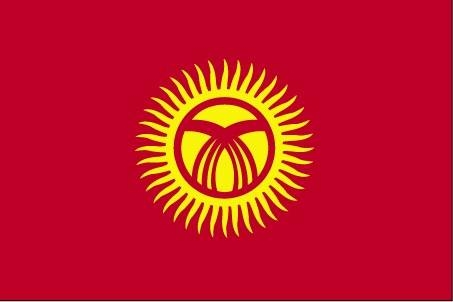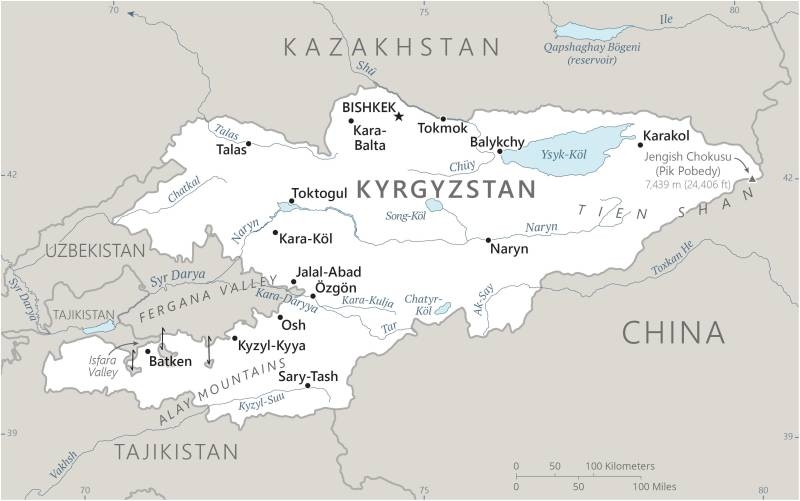Country Summary




Introduction
Background
A Central Asian country of incredible natural beauty and proud nomadic traditions, most of the territory of the present-day Kyrgyz Republic was formally annexed to the Russian Empire in 1876. The Kyrgyz Republic became a Soviet republic in 1936 and achieved independence in 1991 when the USSR dissolved.
Geography
Area
total: 199,951 sq km
land: 191,801 sq km
water: 8,150 sq km
Climate
dry continental to polar in high Tien Shan Mountains; subtropical in southwest (Fergana Valley); temperate in northern foothill zone
Natural resources
abundant hydropower; gold, rare earth metals; locally exploitable coal, oil, and natural gas; other deposits of nepheline, mercury, bismuth, lead, and zinc
People and Society
Population
6,071,750 (2022 est.)
Ethnic groups
Kyrgyz 73.8%, Uzbek 14.8%, Russian 5.1%, Dungan 1.1%, other 5.2% (includes Uyghur, Tajik, Turk, Kazakh, Tatar, Ukrainian, Korean, German) (2021 est.)
Languages
Kyrgyz (official) 71.4%, Uzbek 14.4%, Russian (official) 9%, other 5.2% (2009 est.)
Religions
Muslim 90% (majority Sunni), Christian 7% (Russian Orthodox 3%), other 3% (includes Jewish, Buddhist, Baha'i) (2017 est.)
Population growth rate
0.86% (2022 est.)
Government
Government type
parliamentary republic
Capital
name: Bishkek
Executive branch
chief of state: President Sadyr JAPAROV (since 28 January 2021)
head of government: President Sadyr JAPAROV (since 28 January 2021)
Legislative branch
description: unicameral Supreme Council or Jogorku Kenesh (90 seats statutory, current 88; 54 seats allocated for proportional division among political party lists from the national vote and 36 seats allocated for candidates running in single-seat constituencies; members serve 5-year terms; parties must receive 5% of the vote to win seats in the Council)
Economy
Economic overview
landlocked, lower-middle-income Central Asian economy; natural resource rich; growing hydroelectricity and tourism; high remittances; corruption limits investment; COVID-19 and political turmoil hurt GDP, limited public revenues, and increased spending
Real GDP (purchasing power parity)
$31.02 billion (2020 est.)
Real GDP per capita
$4,700 (2020 est.)
Agricultural products
milk, potatoes, sugar beet, maize, wheat, barley, tomatoes, watermelons, onions, carrots/turnips
Industries
small machinery, textiles, food processing, cement, shoes, lumber, refrigerators, furniture, electric motors, gold, rare earth metals
Exports
$3.11 billion (2019 est.)
Exports - partners
United Kingdom 56%, Kazakhstan 13%, Russia 13%, Uzbekistan 5% (2019)
Exports - commodities
gold, precious metals, various beans, refined petroleum, scrap copper (2019)
Imports
$5.67 billion (2019 est.)
Imports - partners
China 53%, Russia 17%, Kazakhstan 7%, Uzbekistan 7%, Turkey 5% (2019)
Imports - commodities
refined petroleum, footwear, clothing and apparel, broadcasting equipment, walnuts (2019)
Exchange rates
soms (KGS) per US dollar -
Page last updated: Wednesday, August 03, 2022
